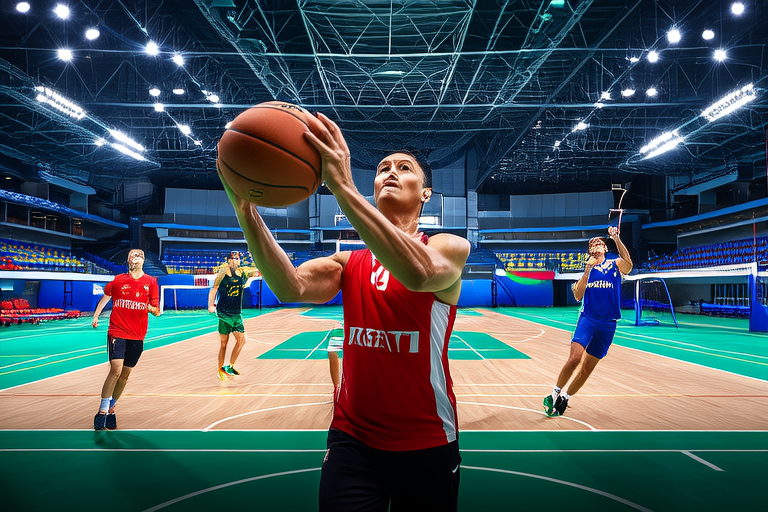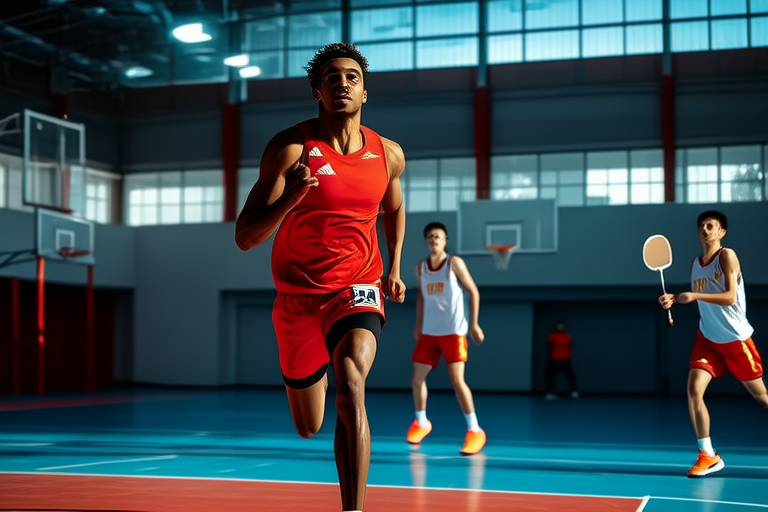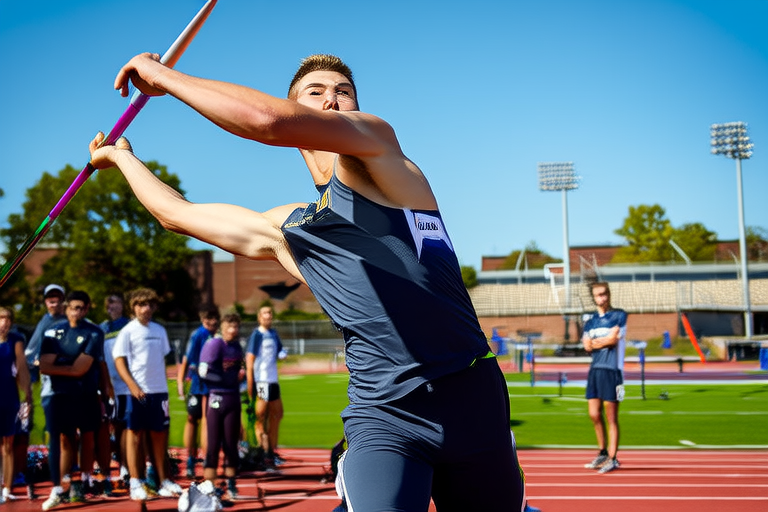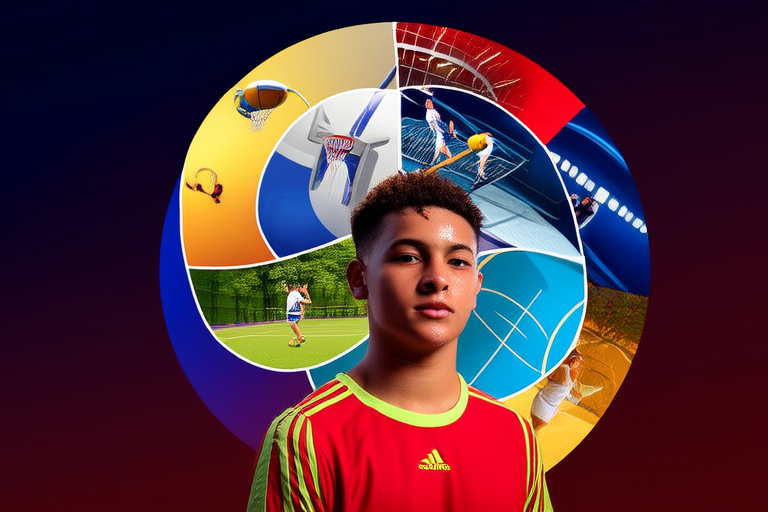Diverse Sports Categories: A Path to Physical and Mental Well-being
Sports play a crucial role in maintaining a healthy and active lifestyle. They offer numerous physical and mental benefits that contribute to overall well-being. This article explores different types of sports, categorizing them into team sports, individual sports, indoor sports, outdoor sports, contact sports, non-contact sports, and extreme sports. We will examine the physical and mental benefits of each category, providing examples and emphasizing the importance of choosing the right sport based on personal preferences, fitness goals, and lifestyle.
Team Sports
Team sports involve multiple players working together towards a common goal. Examples include soccer, basketball, volleyball, and hockey. Team sports promote teamwork, communication, and cooperation, fostering social connections and camaraderie. Participating in team sports can improve cardiovascular health, muscle strength, flexibility, coordination, and stress reduction. Additionally, they enhance mental sharpness through strategic thinking and decision-making.
- Cardiovascular Health: Regular participation in team sports can significantly improve cardiovascular health, reducing the risk of heart disease and stroke. For example, playing soccer or basketball can elevate heart rate, improving circulation and increasing lung capacity.
- Muscle Strength: Team sports often require physical exertion, helping to build and maintain muscle strength. Sports like volleyball and hockey involve jumping, throwing, and catching, which engage multiple muscle groups.
- Flexibility and Coordination: Many team sports demand agility and balance, enhancing flexibility and coordination. Activities like dribbling, passing, and shooting in basketball or soccer can improve hand-eye coordination and body control.
- Stress Reduction: Engaging in team sports can be an excellent way to reduce stress and anxiety. The social aspect of team sports provides emotional support, while physical activity releases endorphins, promoting relaxation and happiness.
- Mental Sharpness: Team sports require quick thinking, problem-solving, and adaptability, all of which contribute to improved mental sharpness. Players must constantly assess situations, make decisions, and adjust strategies during gameplay.
Individual Sports
Individual sports focus on personal achievement and self-improvement. Examples include running, swimming, cycling, and weightlifting. These sports offer numerous physical and mental benefits, such as increased cardiovascular endurance, enhanced muscular strength, improved flexibility, and better coordination. Additionally, they promote stress reduction and mental sharpness through mindfulness and concentration.
- Cardiovascular Endurance: Running, swimming, and cycling are excellent activities for improving cardiovascular endurance. These sports challenge the heart and lungs, promoting efficient oxygen uptake and circulation.
- Muscular Strength: Weightlifting and other resistance-based exercises can significantly increase muscular strength. These activities target specific muscle groups, promoting balanced development and functional strength.
- Flexibility and Coordination: Swimming and yoga are great for improving flexibility and coordination. These sports involve fluid movements that engage multiple muscle groups, enhancing joint mobility and balance.
- Stress Reduction: Engaging in individual sports can be a meditative experience, promoting mindfulness and relaxation. Activities like running or yoga encourage deep breathing and focused attention, reducing stress and anxiety.
- Mental Sharpness: Individual sports often require intense concentration and focus, sharpening mental acuity. Athletes must stay present and attentive, honing their ability to concentrate and maintain mental clarity.
Indoor Sports
Indoor sports are played within enclosed spaces, offering protection from harsh weather conditions. Examples include gymnastics, badminton, table tennis, and rock climbing. Indoor sports provide numerous physical and mental benefits, such as improved cardiovascular health, enhanced muscular strength, increased flexibility, and better coordination. Additionally, they promote stress reduction and mental sharpness through structured environments and focused attention.
- Cardiovascular Health: Gymnastics and badminton are excellent activities for improving cardiovascular health. These sports involve continuous movement, elevating heart rate and promoting efficient oxygen uptake.
- Muscular Strength: Rock climbing and weightlifting are great for building muscular strength. These activities target specific muscle groups, promoting balanced development and functional strength.
- Flexibility and Coordination: Gymnastics and yoga are ideal for improving flexibility and coordination. These sports involve fluid movements that engage multiple muscle groups, enhancing joint mobility and balance.
- Stress Reduction: Engaging in indoor sports can be a therapeutic experience, promoting relaxation and reducing stress. Activities like table tennis or yoga encourage deep breathing and focused attention, alleviating tension and anxiety.
- Mental Sharpness: Indoor sports often require intense concentration and focus, sharpening mental acuity. Athletes must stay present and attentive, honing their ability to concentrate and maintain mental clarity.
Outdoor Sports
Outdoor sports are played in natural environments, offering opportunities for fresh air and scenic views. Examples include hiking, cycling, kayaking, and golf. Outdoor sports provide numerous physical and mental benefits, such as improved cardiovascular health, enhanced muscular strength, increased flexibility, and better coordination. Additionally, they promote stress reduction and mental sharpness through exposure to nature and physical activity.
- Cardiovascular Health: Hiking and cycling are excellent activities for improving cardiovascular health. These sports involve continuous movement, elevating heart rate and promoting efficient oxygen uptake.
- Muscular Strength: Kayaking and rock climbing are great for building muscular strength. These activities target specific muscle groups, promoting balanced development and functional strength.
- Flexibility and Coordination: Golf and yoga are ideal for improving flexibility and coordination. These sports involve fluid movements that engage multiple muscle groups, enhancing joint mobility and balance.
- Stress Reduction: Engaging in outdoor sports can be a therapeutic experience, promoting relaxation and reducing stress. Activities like hiking or cycling encourage deep breathing and focused attention, alleviating tension and anxiety.
- Mental Sharpness: Outdoor sports often require intense concentration and focus, sharpening mental acuity. Athletes must stay present and attentive, honing their ability to concentrate and maintain mental clarity.
Contact Sports
Contact sports involve physical interaction between players, promoting teamwork, communication, and cooperation. Examples include rugby, football, and wrestling. Contact sports offer numerous physical and mental benefits, such as increased cardiovascular health, enhanced muscular strength, improved flexibility, and better coordination. Additionally, they promote stress reduction and mental sharpness through strategic thinking and decision-making.
- Cardiovascular Health: Rugby and football are excellent activities for improving cardiovascular health. These sports involve continuous movement, elevating heart rate and promoting efficient oxygen uptake.
- Muscular Strength: Wrestling and rugby are great for building muscular strength. These activities target specific muscle groups, promoting balanced development and functional strength.
- Flexibility and Coordination: Football and wrestling are ideal for improving flexibility and coordination. These sports involve fluid movements that engage multiple muscle groups, enhancing joint mobility and balance.
- Stress Reduction: Engaging in contact sports can be a therapeutic experience, promoting relaxation and reducing stress. Activities like football or wrestling encourage deep breathing and focused attention, alleviating tension and anxiety.
- Mental Sharpness: Contact sports often require intense concentration and focus, sharpening mental acuity. Athletes must stay present and attentive, honing their ability to concentrate and maintain mental clarity.
Non-Contact Sports
Non-contact sports involve minimal physical interaction between players, focusing on skill and technique. Examples include tennis, badminton, and table tennis. Non-contact sports offer numerous physical and mental benefits, such as increased cardiovascular health, enhanced muscular strength, improved flexibility, and better coordination. Additionally, they promote stress reduction and mental sharpness through strategic thinking and decision-making.
- Cardiovascular Health: Tennis and badminton are excellent activities for improving cardiovascular health. These sports involve continuous movement, elevating heart rate and promoting efficient oxygen uptake.
- Muscular Strength: Table tennis and badminton are great for building muscular strength. These activities target specific muscle groups, promoting balanced development and functional strength.
- Flexibility and Coordination: Badminton and tennis are ideal for improving flexibility and coordination. These sports involve fluid movements that engage multiple muscle groups, enhancing joint mobility and balance.
- Stress Reduction: Engaging in non-contact sports can be a therapeutic experience, promoting relaxation and reducing stress. Activities like table tennis or badminton encourage deep breathing and focused attention, alleviating tension and anxiety.
- Mental Sharpness: Non-contact sports often require intense concentration and focus, sharpening mental acuity. Athletes must stay present and attentive, honing their ability to concentrate and maintain mental clarity.
Extreme Sports
Extreme sports push athletes to their limits, offering a thrilling and adrenaline-pumping experience. Examples include skydiving, bungee jumping, and rock climbing. Extreme sports provide numerous physical and mental benefits, such as increased cardiovascular health, enhanced muscular strength, improved flexibility, and better coordination. Additionally, they promote stress reduction and mental sharpness through heightened excitement and risk-taking.
- Cardiovascular Health: Skydiving and rock climbing are excellent activities for improving cardiovascular health. These sports involve intense physical exertion, elevating heart rate and promoting efficient oxygen uptake.
- Muscular Strength: Bungee jumping and rock climbing are great for building muscular strength. These activities target specific muscle groups, promoting balanced development and functional strength.
- Flexibility and Coordination: Skydiving and rock climbing are ideal for improving flexibility and coordination. These sports involve fluid movements that engage multiple muscle groups, enhancing joint mobility and balance.
- Stress Reduction: Engaging in extreme sports can be a therapeutic experience, promoting relaxation and reducing stress. Activities like skydiving or bungee jumping encourage deep breathing and focused attention, alleviating tension and anxiety.
- Mental Sharpness: Extreme sports often require intense concentration and focus, sharpening mental acuity. Athletes must stay present and attentive, honing their ability to concentrate and maintain mental clarity.
The Importance of Choosing the Right Sport
Selecting the appropriate sport is essential for achieving personal fitness goals and maintaining a healthy lifestyle. Consider factors such as personal preferences, fitness levels, and available resources when choosing a sport. It is important to consult with a healthcare professional before beginning any new exercise program, especially if you have pre-existing medical conditions or concerns. By exploring various sports, you can find the one that best suits your needs and interests, ensuring a fun and fulfilling experience.
Conclusion
Exploring different types of sports can lead to a healthier and more active lifestyle. Each category offers unique physical and mental benefits, contributing to overall well-being. Whether you prefer team sports, individual sports, indoor sports, outdoor sports, contact sports, non-contact sports, or extreme sports, there is a sport that can help you achieve your fitness goals and improve your quality of life. Embrace the opportunity to try new activities and discover what works best for you. Remember, the key to a healthy and active lifestyle is consistency and enjoyment. So, get out there and find the sport that makes you happy!










